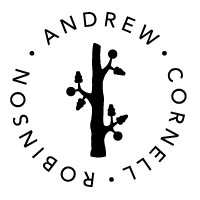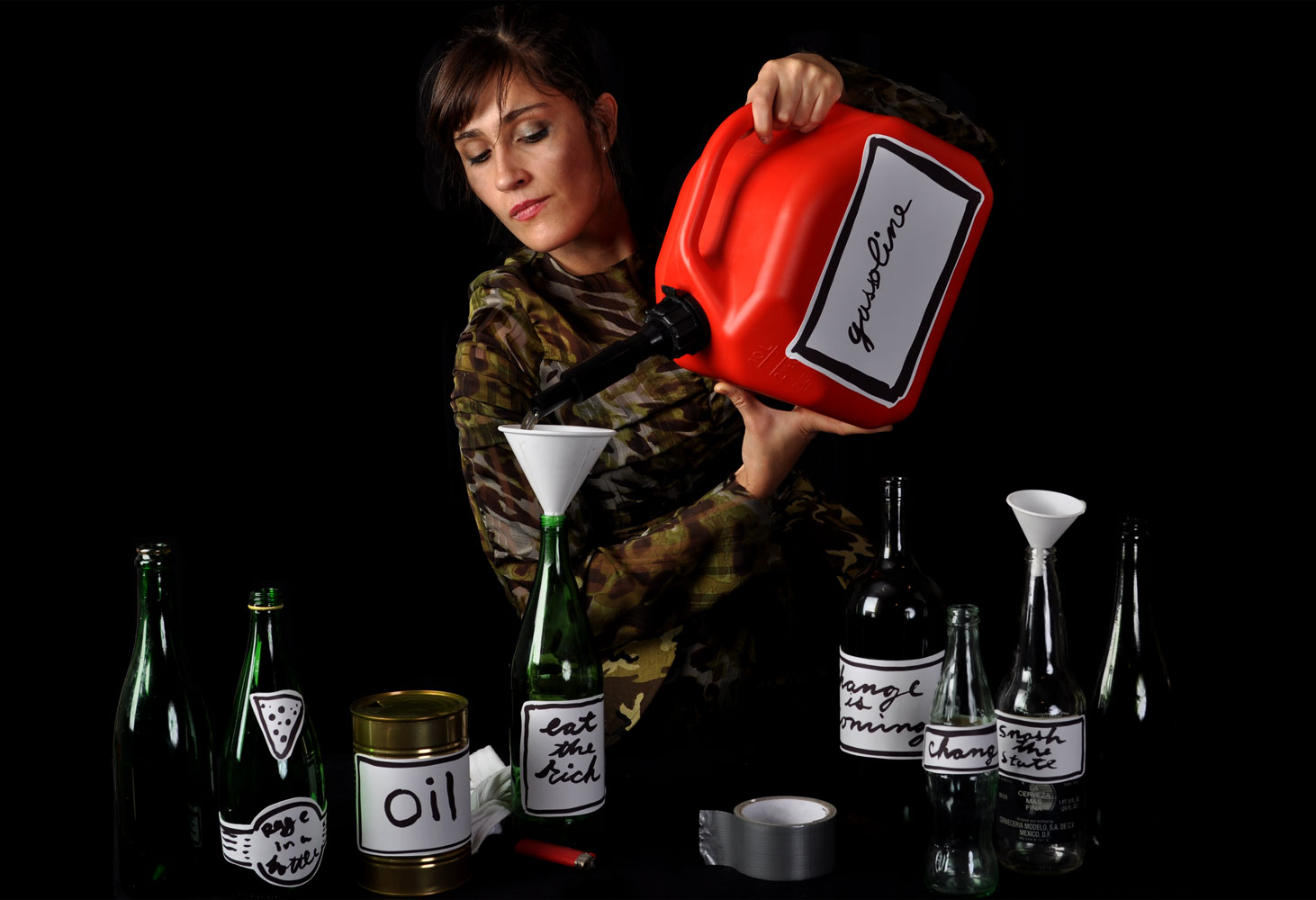Private lives are difficult to trace in the public pages of history. While birth, marriage, and death are fairly clear public markers of heterosexual private lives, the private lives of the homosexual are all too often erased, or redacted from our shared histories. This is exacerbated when honest revelations about a queer person’s life might lead to public ridicule, or criminal prosecution. LGBTQ people seldom have the privilege to examine their lives through the lens of queer histories. Our diaries, and life’s works are left in the hands of descendants or executors who by and large have felt the need to edit the unseemly details out of the public eye. It is remarkable that queer revealing diaries and letters get written at all, much less survive the death of their writer.
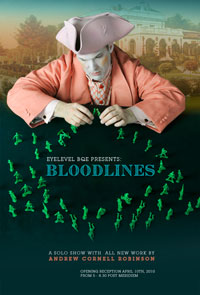
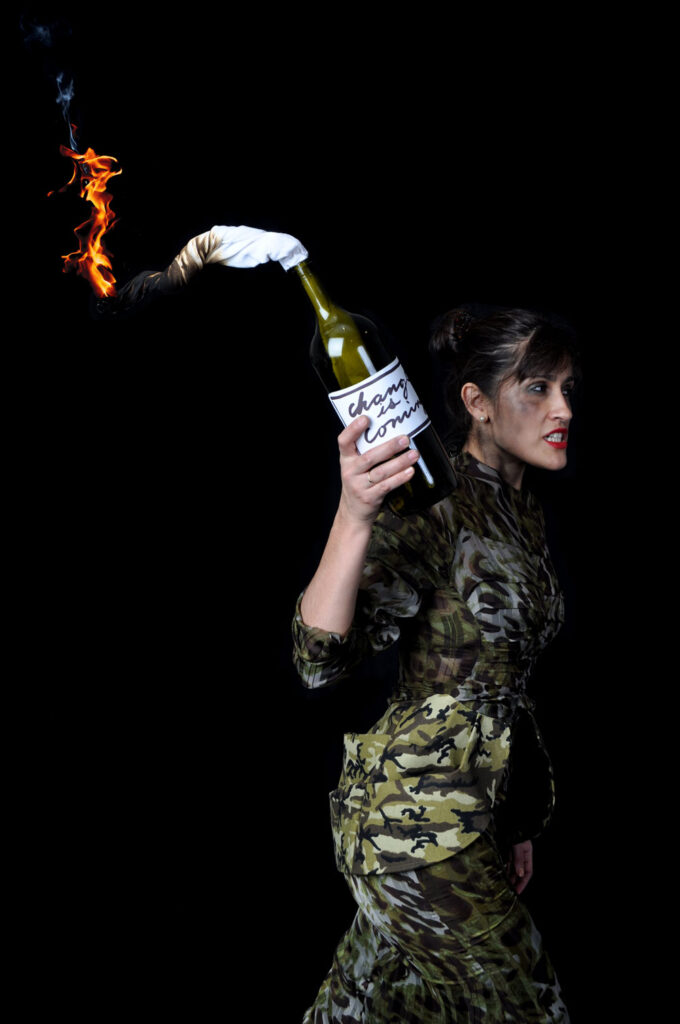
From 2008 to 2010 Andrew Cornell Robinson worked on an interdisciplinary body of work which used historical fictions to create queer revolutionary characters (ancestors) named Isabela and Frederick. These personae were then used to facilitate conversations and collaborations between Andrew and a fashion designer from the Dominican Republic, a bespoke tailor from Panama, a DJ from Canada, a Photographer from Los Angeles, and a curator from Mexico City. This two year long project includes the creation of drawings, limited edition prints, ceramics, sculpture, costumes, photographic essays, and musical mixed tapes for each character. All of this culminated in the exhibition Bloodlines, a fabulist historical society presenting the evidence of queer and peculiar lives lived courageously. Presented at the Eyelevel BQE gallery in Williamsburg Brooklyn, it was then presented in London, at the United Kingdom’s Crafts Council annual conference.
Project Images
Exhibition Essay
“To be queer is to cobble together identity, to fashion provisional tactics at will, to pollute and deflate all discourses. Historically, this activity has been a possibility for either the upper class, whose privilege is utilized to exercise power, or for the lower class, whose reworkings of high culture have often served as a form of social resistance. At various times queer practice has been associated with both the upper and lower class positions.”
Nayland Blake
COBBLING TOGETHER
Bloodlines, the work of Andrew Cornell Robinson
By Zane Wilson
To be queer we have to make our own identity – the community we choose to live in and identify with, often forms the idea of family for gays and lesbians. Friends, neighbors, lovers, counselors, and for Andrew, other artists have become those we rely on and that inform our sense of belonging. This search and destroy and remake methodology of queerness is a tool that aides Andrew in breaking down what he was told throughout his life and reconstructing notions of family and history as inclusionary to his own identity. Andrew and his partner Sigfrido Holguin recognized the invisibility of their own community in history. The couple looked to the matriarchs and patriarchs of their families for stories to retell. Through their discussions they refashioned the lives of two of the most stoic and ostensibly straight figures in their families to be more accepting, inviting and certainly more interesting. By subversion and reconstruction of their histories Andrew and Sigfrido extrapolate these personalities in an effort to remake their own world as they see fit. Their combined works effectively cobble together disparate lives and ostensibly form a family that the couple would want to share.
Via research and clever embellishment Andrew rewrites his own roots to address and highlight the couple’s ancestry to become more accessible and valuable to Andrew. Stories his parents, family, and partner related form the foundation of new identities based on information provided. These personalities are adorned with various accouterments specific to their disparate lives. Andrew’s fabricated works in ceramic, and composite materials form the basis of his own stories built on queered mythologies including elemental, animal and material symbolism. The drawings and silkscreens are rendered in playful pinks and made sinister given their content. Images and objects of: Molotov cocktails, guns, food, wine, a goat, decapitated heads, and also the characters’ respective articles of clothing are testaments and contrivances of and to their lives.
To frame Andrew Robinson’s project, an artist like Joseph Beuys seems an unusual but poignant counterpart. Andrew visited the Guggenheim Museum as a youth and saw a retrospective of the iconic German artist Joseph Beuys. The visit seems a defining moment for Andrew; not only because the works were made of understandable, comprehensible “things” but also because the work told a story of an identity being formed through objects. Encountering works that stretched throughout the museum—tons of tallow plopped on pallets, sleds trailing Volkswagen buses, objects made of strange materials—served as an introduction to art with an engaging story. The art historical legend that cements Beuys’ disparate and ranging works provides a reference point and a framework for the development of the objects created. Andrew, similarly is developing his own stories and works in a similar fashion with a very different goal: to reclaim a history that doesn’t include him as a gay man. Each successive work Beuys made or Andrew makes; seems to solidify their narratives further and their differing political agendas. The characters’ stories Andrew develops; like Cheryl Dunye’s ‘Watermelon Woman’ or Adrian Piper’s multicultural gender-bending photographic works, are intense fabrications that reveal Andrew’s desire for inclusion and express his frustration with history’s denial of actual important and productive queer figures. For all of these artists the creation of their own identity(ies) served different, albeit politically motivated agendas.
In Andrew’s current work he appears as General Fred Frelinghuysen. Grappling with a multitude of facts Andrew condenses the General’s story and performs what he wants this character to be. The particular story highlights Frelinghuysen as General, documenting him after he has made new uniforms for his men that were freezing on a battlefield. The uniforms he created were of stolen, beautiful pink satins and wools. Andrew latches on to this moment quite intentionally. Images of Fred Frelinghuysen evoke characters and descriptions from Jean Genet’s The Thief’s Journal: “Should I have to portray a convict—or a criminal I shall so bedeck him with flowers that, as he disappears beneath them, he will himself become a flower, a gigantic and new one.” No, this man is not a criminal. The atrocities and slaughter General Frelinghuysen contributed to helped form our nation. Genet and Andrew are in a sense growing their own gardens, mucking around with fertilizer in an effort to grow some roses. Both artist and writer are infatuated by the hardened man – one who makes his own identity rather than necessarily taking the straight path that lay out before him. Andrew through his performance softens Frelinghuysen’s persona and his powerful; revolutionary acts with a uniform of flowery prints, pastel tones and satin textures. Andrew’s own bearish softness contributes to the inversion of the power Fred would have once been known for.
Andrew’s accompanying photographic documentation involves a friend known as ‘Bibin’ or Maria Isabel Rosario. This woman, not unlike Fred Frelinghuysen, is an upstart; a revolutionary who damned the men who wronged her and protected her land and belongings fiercely. Bibin’s own performance in her homeland wearing camouflage and blue face paint; acting as the legendary La Ciguapa to scold and inflict punishment upon her enemies is an interesting notion. To confuse her gender to the men she is attacking, Bibin dons men’s leather shoe soles worn backwards to confuse her enemies. Her story being retold by Andrew becomes drag on top of drag. Like the General and Andrew himself, this woman is cunning and resourceful.
Andrew Robinson’s works in this show overlap themes of multiple cultures, sexual identity, absence of historical presence, political awareness executed through careful nods to art history through genuine invention of beautifully crafted objects. These works remind the viewer that history is told by those in power – we must assert ourselves as individuals and communities, who have a voice and a lineage that deserves to be shared.
Nayland Blake, “An Introduction to In a Different Light,” In a Different Light -Visual Culture, Sexual Identity, Queer Practice (San Francisco, City Lights Books, 1995)
Jean Genet, “The Thief’s Journal,” The Selected Writings of Jean Genet (New Jersey, The Ecco Press, 1993)
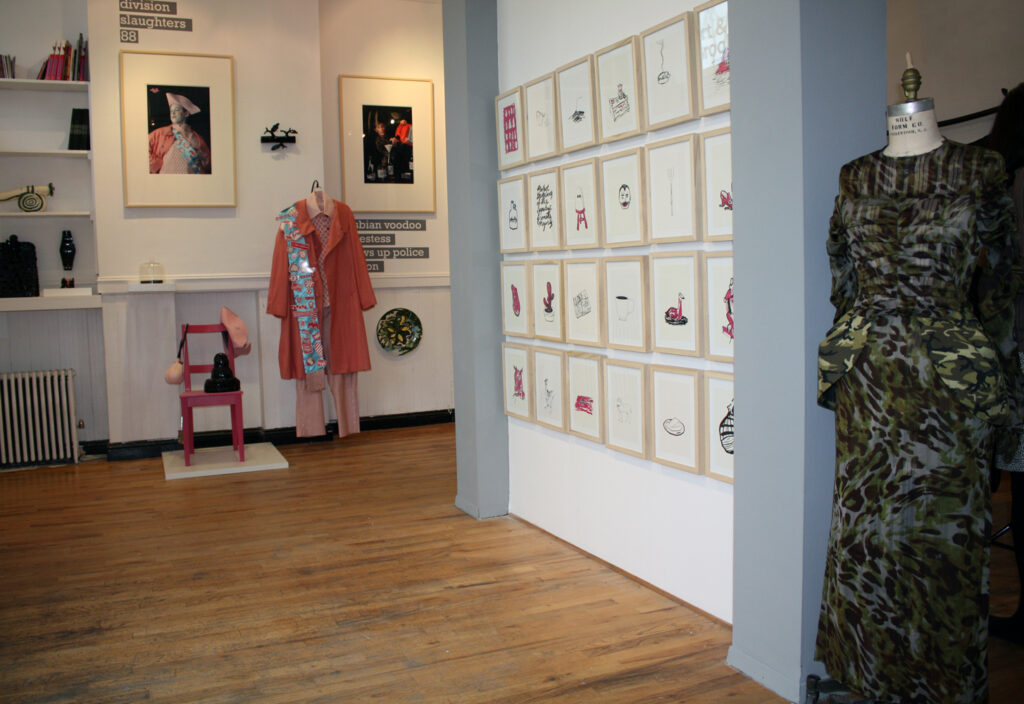
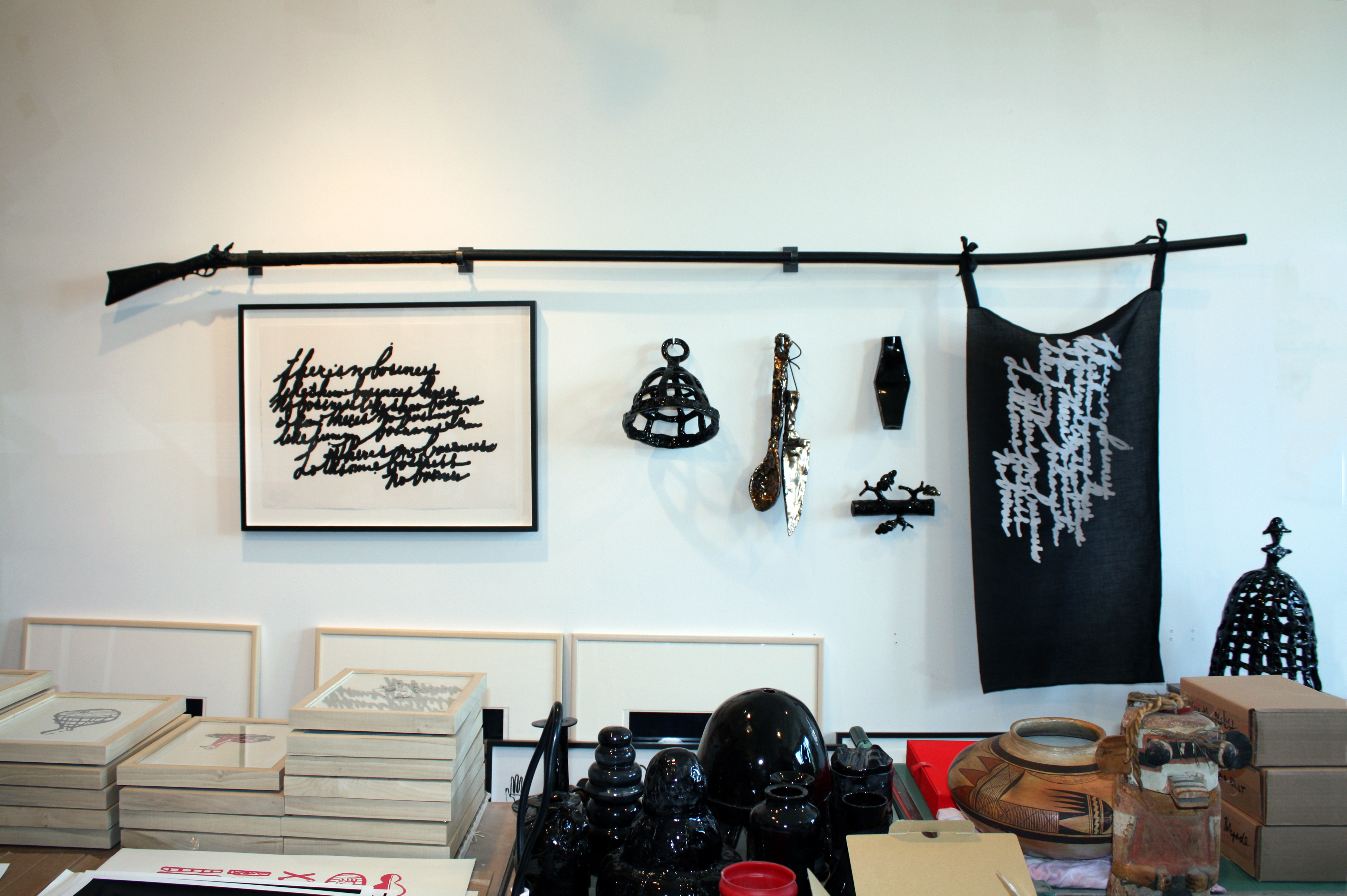
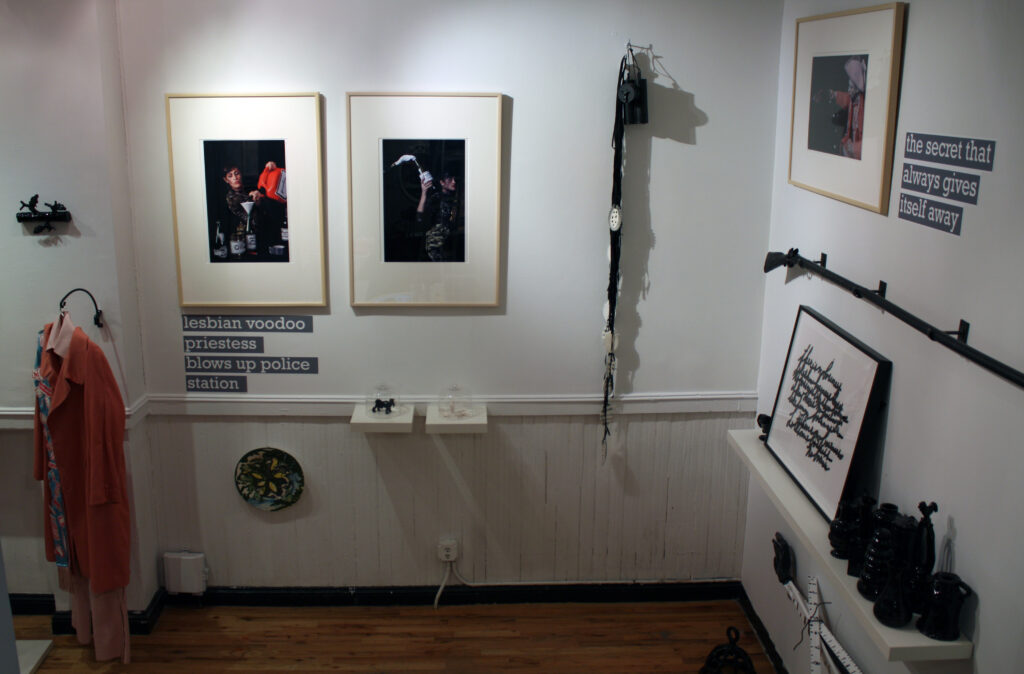
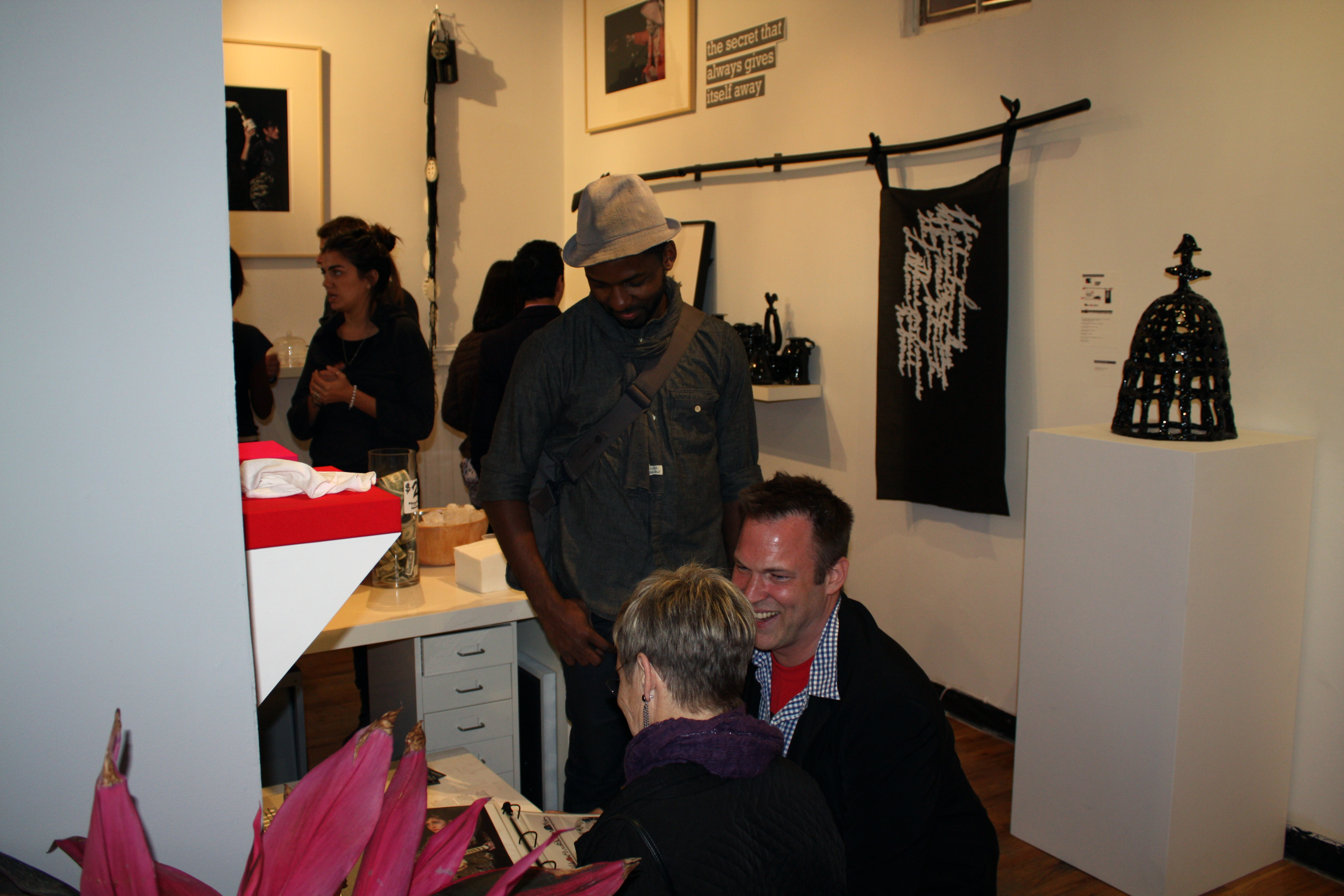
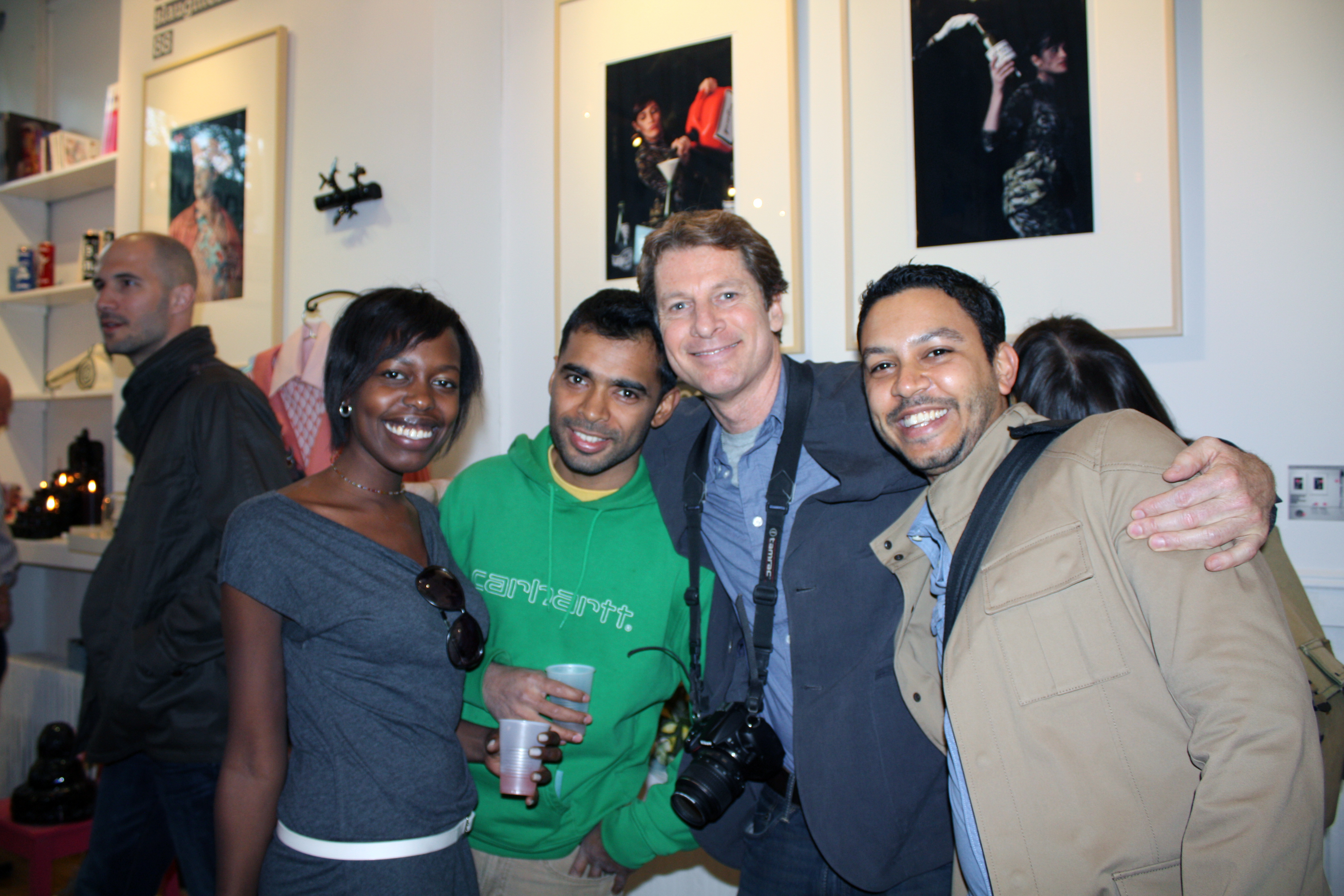
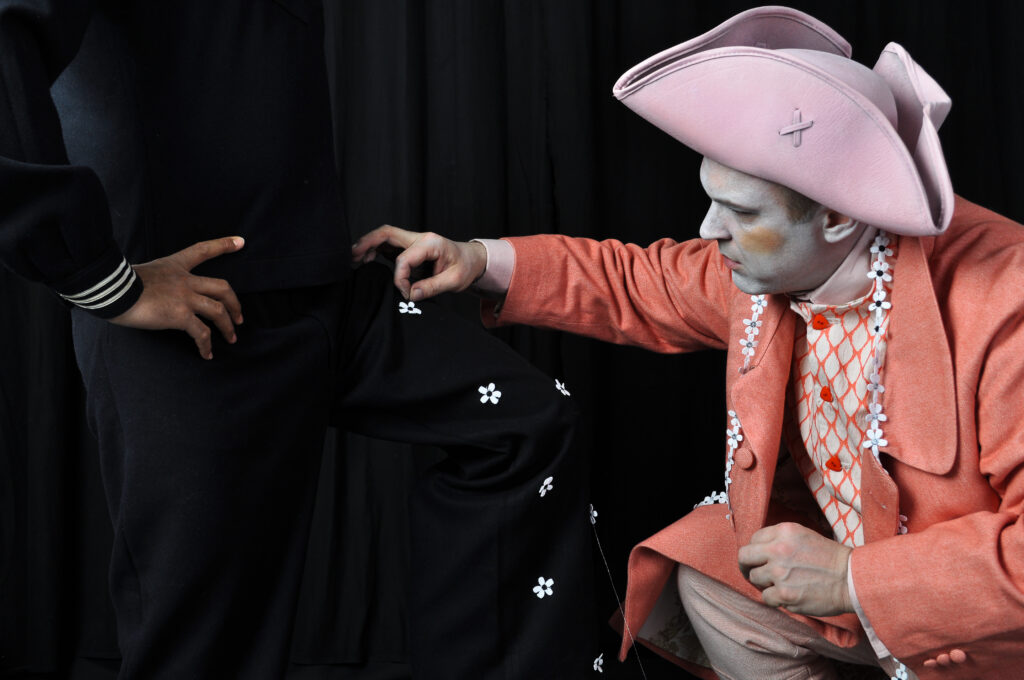
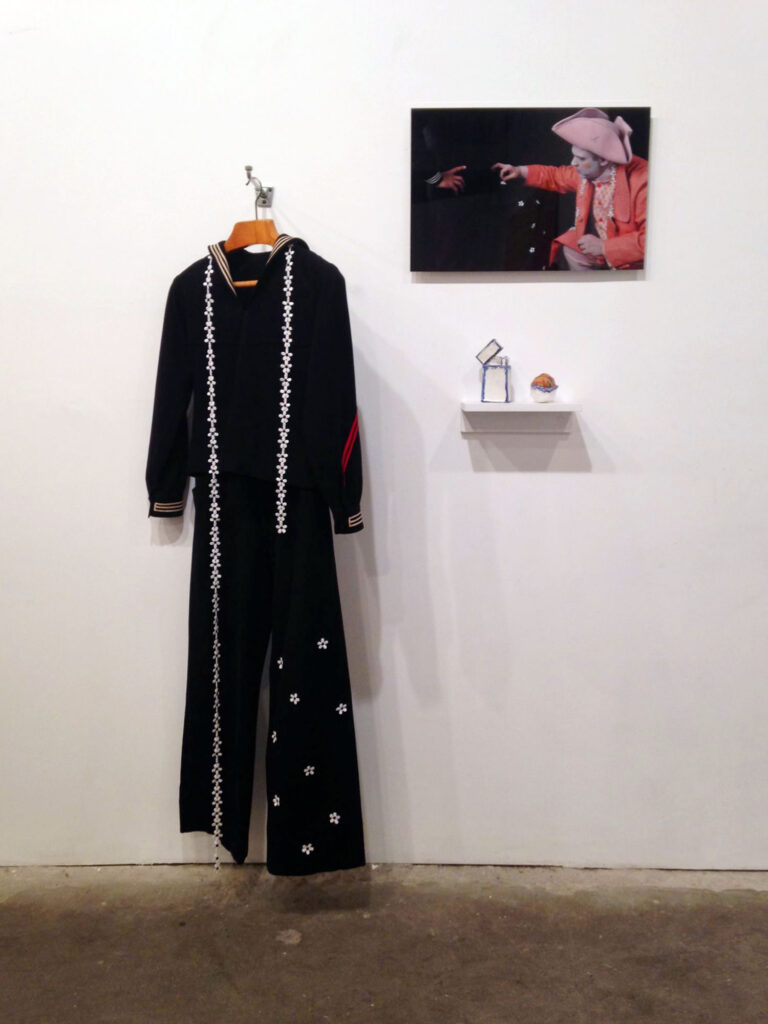
Participants:
- Andrew Cornell Robinson, Visual Artist and Model
- Alva CalyMayor, Curator and Model
- Sigfrido Holguin, Fashion Designer and Model
- Tony Mi Montuno, Bespoke Tailor
- Matt Lament, Music DJ
